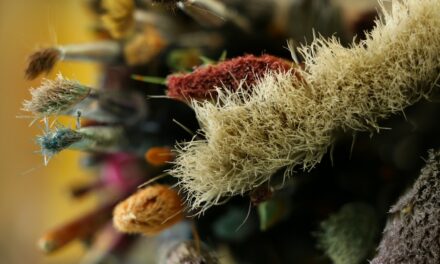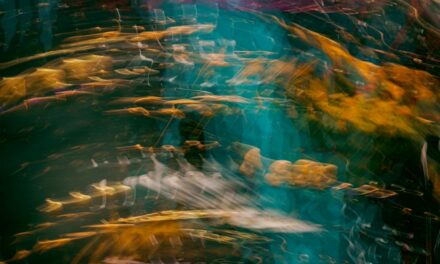In the realm of digital art and photography, layer masks and blending modes are indispensable tools that empower artists to manipulate images with precision and creativity. Layer masks allow for non-destructive editing, enabling artists to hide or reveal portions of a layer without permanently altering the original image. This flexibility is crucial for achieving complex compositions, as it permits the artist to experiment freely without the fear of losing their initial work.
By painting on a layer mask with varying shades of black, white, and grey, one can control the visibility of the layer beneath, creating intricate effects that would be challenging to achieve through traditional means. Blending modes, on the other hand, dictate how a layer interacts with the layers beneath it. Each mode alters the way colours and tones blend together, resulting in a myriad of visual effects.
For instance, the ‘Multiply’ mode darkens images by multiplying the base colour with the blend colour, while ‘Screen’ lightens by inverting the colours and multiplying them. Understanding these modes is essential for any digital artist, as they can dramatically change the mood and atmosphere of a piece. Together, layer masks and blending modes form a powerful duo that can elevate an artist’s work from ordinary to extraordinary.
Summary
- Layer masks and blending modes are essential tools for creating realistic textures and enhancing depth in digital artwork.
- By using layer masks, artists can add realistic details and achieve natural lighting effects in their compositions.
- Blending modes can be used to enhance depth and dimension, as well as to create seamless blends in composite images.
- Mastering layer masks and blending modes requires practice and experimentation, but can greatly improve the quality of digital artwork.
- Understanding how to use layer masks and blending modes effectively is key to creating photorealistic composites and achieving professional-looking results.
Creating Realistic Textures with Layer Masks
The creation of realistic textures is a fundamental aspect of digital artistry that can significantly enhance the visual appeal of an artwork. Layer masks play a pivotal role in this process by allowing artists to seamlessly integrate textures into their compositions. For instance, an artist may wish to add a gritty texture to a smooth surface, such as skin or fabric.
By applying a texture layer and using a mask, they can selectively reveal parts of the texture while preserving the underlying smoothness where necessary. This technique not only adds depth but also creates a more tactile quality that engages viewers on a sensory level. Moreover, layer masks enable artists to blend textures in a way that feels organic and natural.
By adjusting the opacity of the texture layer and using soft brushes on the mask, one can create subtle transitions that mimic real-world materials. For example, when adding a rough stone texture to a digital landscape, an artist can use a layer mask to ensure that the texture appears more pronounced in certain areas while fading into the background in others. This nuanced approach results in a more convincing representation of reality, allowing viewers to immerse themselves fully in the artwork.
Enhancing Depth and Dimension with Blending Modes
Blending modes are instrumental in enhancing depth and dimension within digital artworks. By manipulating how layers interact with one another, artists can create a sense of three-dimensionality that draws the viewer’s eye into the composition. For instance, using the ‘Overlay’ blending mode can intensify highlights and shadows simultaneously, giving objects a more sculptural appearance.
This mode combines both ‘Multiply’ and ‘Screen’, allowing for rich contrasts that can make elements pop off the canvas. Additionally, blending modes can be employed to simulate atmospheric effects that contribute to depth perception. For example, an artist might use ‘Soft Light’ to create a hazy atmosphere in a landscape painting, suggesting distance and depth by softening colours and reducing contrast in the background.
This technique not only enhances realism but also guides the viewer’s focus towards the focal point of the artwork. By mastering blending modes, artists can manipulate light and shadow in ways that evoke emotion and narrative within their pieces.
Using Layer Masks and Blending Modes for Photorealistic Composites
The combination of layer masks and blending modes is particularly powerful when it comes to creating photorealistic composites. In this context, artists often work with multiple images to construct a single cohesive piece. Layer masks allow for precise control over which parts of each image are visible, enabling seamless integration of disparate elements.
For instance, when combining a foreground subject with a complex background, an artist can use masks to ensure that edges are clean and natural-looking, avoiding harsh lines that would detract from realism. Blending modes further enhance this process by allowing artists to adjust how colours and tones interact across layers. When merging images with different lighting conditions or colour palettes, blending modes can help harmonise these elements.
For example, using ‘Color’ mode can adjust the hue of one layer while preserving its luminosity, ensuring that all components of the composite feel unified. This meticulous attention to detail is what distinguishes amateur composites from professional-grade works; it is through the thoughtful application of layer masks and blending modes that artists achieve stunning realism in their creations.
Achieving Natural Lighting Effects with Blending Modes
Natural lighting effects are crucial for creating believable environments in digital art. Blending modes offer artists an array of options for simulating various lighting conditions, from soft diffused light to harsh shadows. For instance, using ‘Screen’ mode can effectively simulate sunlight filtering through clouds or trees, as it lightens underlying layers while maintaining their colour integrity.
This technique allows for the creation of luminous highlights that evoke warmth and vibrancy in a scene. Conversely, ‘Multiply’ mode is ideal for adding shadows and depth to an artwork. By layering darker colours over lighter ones using this mode, artists can create realistic shadow effects that ground objects within their environment.
This interplay between light and shadow is essential for achieving a sense of realism; without it, even the most detailed artwork can appear flat and unconvincing. By mastering these blending modes, artists can manipulate light in ways that enhance their storytelling and emotional impact.
Adding Realistic Details with Layer Masks
Layer masks are not only useful for blending textures but also for adding intricate details that elevate an artwork’s realism. Artists can use masks to isolate specific areas where they wish to introduce fine details without affecting other parts of the composition. For example, when painting a portrait, an artist might use a layer mask to apply delicate highlights to the eyes or subtle textures to the hair while keeping the skin tone intact.
This selective application allows for greater control over the final appearance of each element. Furthermore, layer masks enable artists to refine details progressively. By painting on a mask with varying opacities or using different brush techniques, one can build up layers of detail gradually.
This method is particularly effective for creating realistic skin textures or intricate patterns in fabrics. The ability to adjust visibility on-the-fly means that artists can experiment freely until they achieve their desired effect without committing to irreversible changes.
Creating Seamless Blends with Layer Masks and Blending Modes
Seamless blends are essential for achieving cohesion in digital artworks, particularly when combining multiple elements or images. Layer masks facilitate this process by allowing artists to control transitions between layers smoothly. By employing soft brushes on masks, one can create gentle fades that make it difficult to discern where one element ends and another begins.
This technique is particularly useful when integrating foreground subjects into backgrounds or when layering textures over images. Blending modes complement this process by enhancing how colours interact at these junctions. For instance, using ‘Soft Light’ or ‘Overlay’ modes can help unify disparate elements by adjusting their tonal relationships without harsh contrasts.
This harmonious blending creates an illusion of continuity within the artwork, making it feel more like a single entity rather than a collection of separate parts. Mastering these techniques is vital for any artist aiming to create polished and professional-looking compositions.
Tips and Tricks for Mastering Layer Masks and Blending Modes
To truly master layer masks and blending modes, artists should embrace experimentation as part of their creative process. One effective approach is to create practice files where different techniques can be tested without fear of ruining a primary project. This allows for exploration of various blending modes and their effects on different textures or colours in isolation before applying them to final works.
Additionally, understanding keyboard shortcuts can significantly enhance workflow efficiency when working with layer masks and blending modes. For instance, quickly toggling between black and white brushes on a mask allows for rapid adjustments without interrupting creative flow. Furthermore, regularly revisiting tutorials or online resources can provide fresh insights into advanced techniques or new applications for these tools.
In conclusion, mastering layer masks and blending modes is essential for any digital artist seeking to elevate their work. These tools not only provide flexibility in editing but also open up new avenues for creativity and expression. By understanding their functions and experimenting with various techniques, artists can create stunning visuals that captivate audiences and convey their artistic vision effectively.
If you are interested in exploring the world of art and creativity further, you may enjoy reading the article


